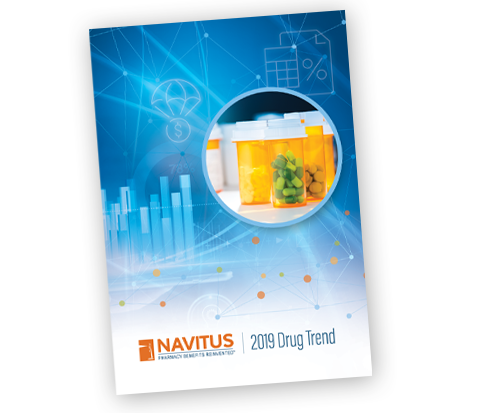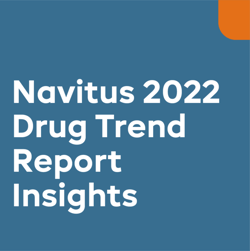Are you looking for innovative engagement solutions to better serve your members? You're not alone.
Plan sponsors have long recognized the importance of engaging members to improve the value of care, both in terms of the benefits for members (such as better outcomes, lower out-of-pocket costs) and the advantages plan sponsors derive, especially the ability to reduce costs without harming—and often improving—the quality of care.
When it comes to pharmacy benefit management, forward-thinking plan sponsors are looking for solutions that embrace digital member engagement. In fact, it is estimated that digitally enabled therapeutics have the potential to reduce medical costs in the United States by as much as $175 billion to $250 billion annually. 1
Members are becoming less passive consumers of health care and are demanding transparency, convenience and access. According to a recent survey, approximately 70% of consumers prefer digital health solutions to phone/in-person solutions for their healthcare needs.2 Members are now more willing to cost compare, push back on their doctors and educate themselves on how to stay healthy.
Can disruptive innovation create a better member experience with better outcomes?
Key disruptors like Peloton® have embraced the customer with innovation that is easy-to-use and addresses a fundamental, overlooked need. Peloton is transforming the fitness industry by giving people a radically different way to get in shape by addressing two key pain points. Traditional in-home exercise bikes were convenient, but didn’t offer the motivation of working out in a coached group. Spin classes had the class and the coach, but they weren’t all that convenient. Peloton was able to combine the two with an exercise bike and a built-in tablet to stream live workout sessions.
From the pharmacy benefit perspective, disruptive innovation provides members personalized, multi-channel engagement using simple communications that are easy to understand and act on, whether by mail, text, email, or phone – regardless of age, physical or technical capability.
Looking at the member journey, here are the biggest areas of opportunity to build trust and improve the experience that will have the most impact:
When a member learns they are getting a new pharmacy benefit, their first reaction may be worry. Will my prescription be covered? What will it cost? Can I use my current pharmacy? For this member, the ability to quickly find those key pieces of information in the way that is most comfortable for them – whether by using an app, logging in to their member portal or speaking to a live person 24/7 is essential to building trust.
It has been estimated that cost of a prescription drives 67% of patients into medication non-adherence.3 In turn, medication non-adherence costs the US healthcare system an estimated $495 billion to $675 billion annually.4
When a member is at the pharmacy, they may have forgotten their ID card. If they have a tool that allows them to view their information on their mobile device, it helps to build a seamless point-of-sale experience.
During Tax Season
In order to achieve top results, the pharmacy benefit plan needs to collect feedback at each point along the member journey and use that information to continually improve the member experience. This mindset of continual learning builds trust, connection and value that will encourage member engagement.
THE NAVITUS ENGAGEMENT STRATEGY
At Navitus, we continue to develop more tailored, personalized support and experiences that specifically target the touch points that members rely on. We will continue to implement innovations to help members:
- Meet their goals for health improvement through programs such as our Retrospective Drug Utilization Review (RDUR).
- Improve condition target levels for members with asthma and members with chronic obstructive pulmonary disease (COPD) via our Respiratory Health program.
- Improve the lives of those living with chronic disease, by partnering with innovative solutions, including the BlueStar® Diabetes app.
- Improve adherence rates for specialty medications through Lumicera’s high-touch program that targets conditions including hepatitis C, rheumatoid arthritis, multiple sclerosis and others.
In fact, our ongoing efforts in 2019 resulted in an average adherence rate of 91%, based on the proportion of days covered. Key drug categories saw high adherence rates including:
- Rheumatoid Arthritis — 91%
- Oncology — 92%
- Multiple Sclerosis — 93%
- Hepatitis C — 98%
Want to learn more? Download Navitus’ 2019 Drug Trend Report.

Sources:
1. Inside the patient journey: Three key touch points for consumer engagement strategies. Deloitte. https://www2.deloitte.com/us/en/insights/industry/health-care/patient-engagement-health-care-consumer-survey.html. Published September 25,2018. Accesssed July 6, 2020.
2. A consumer-centered future of health. Deloitte. https://www2.deloitte.com/content/dam/Deloitte/nl/Documents/life-sciences-health-care/deloitte-nl-healthcare-consumer-centered-future-of-health.pdf. Published September 2019. Accessed July 6, 2020.
3. Cost is a Primary Driver of Medication Non-Adherence Rates. HeathITAnalytics. https://healthitanalytics.com/news/cost-is-a-primary-driver-of-medication-non-adherence-rates. Published September 11, 2017. Accessed July 6, 2020.
4. Does Nonadherence Really Cost the Health Care System $300 Billion Annually?. Pharmacy Times. https://www.pharmacytimes.com/contributor/timothy-aungst-pharmd/2018/06/does-nonadherence-really-cost-the-health-care-system-300-billion-annually. Published June 1, 2018. Accessed July 6, 2020.





